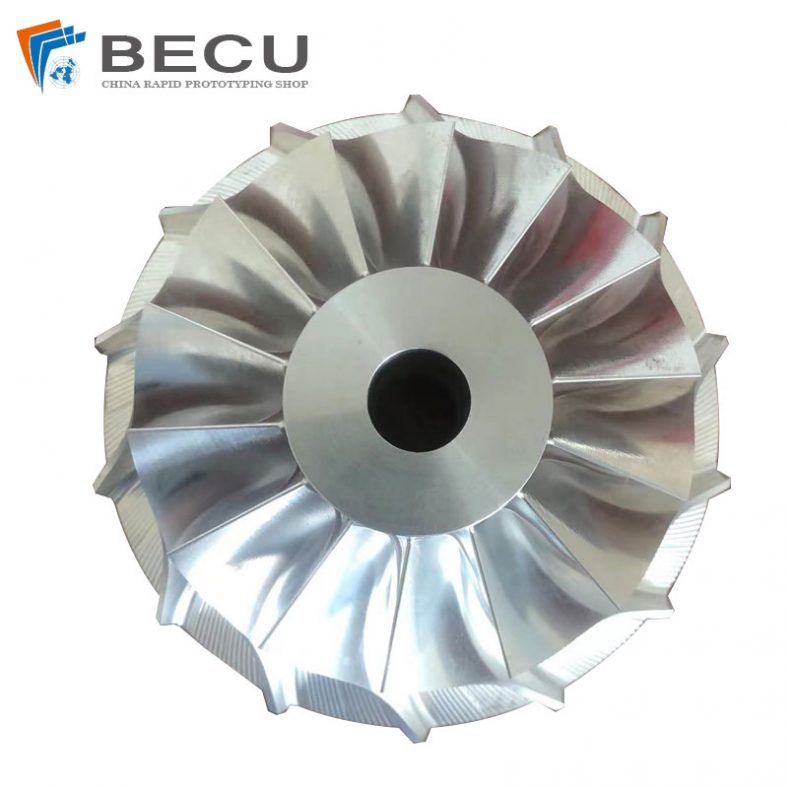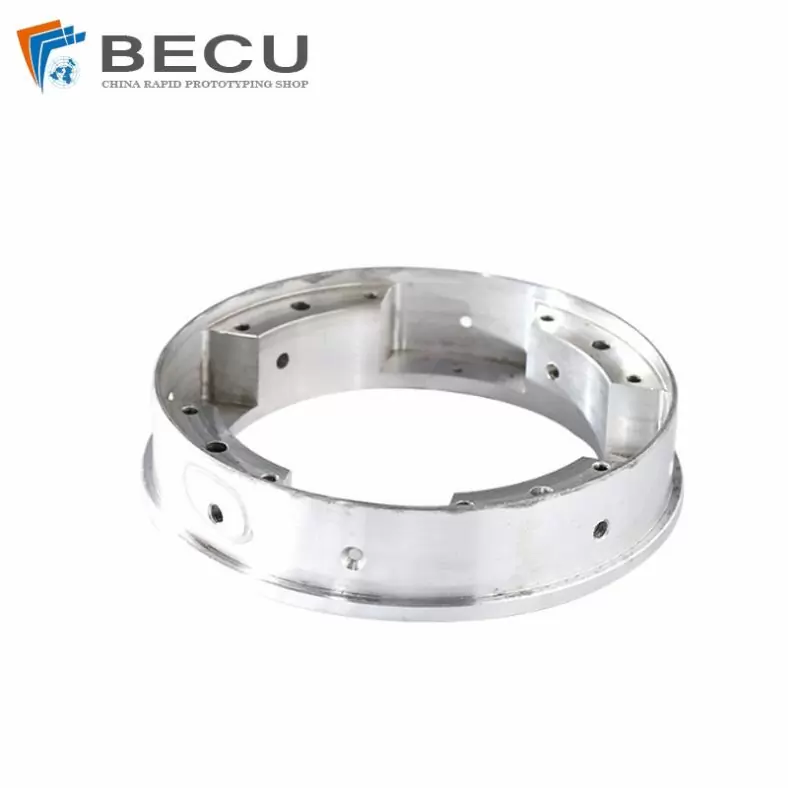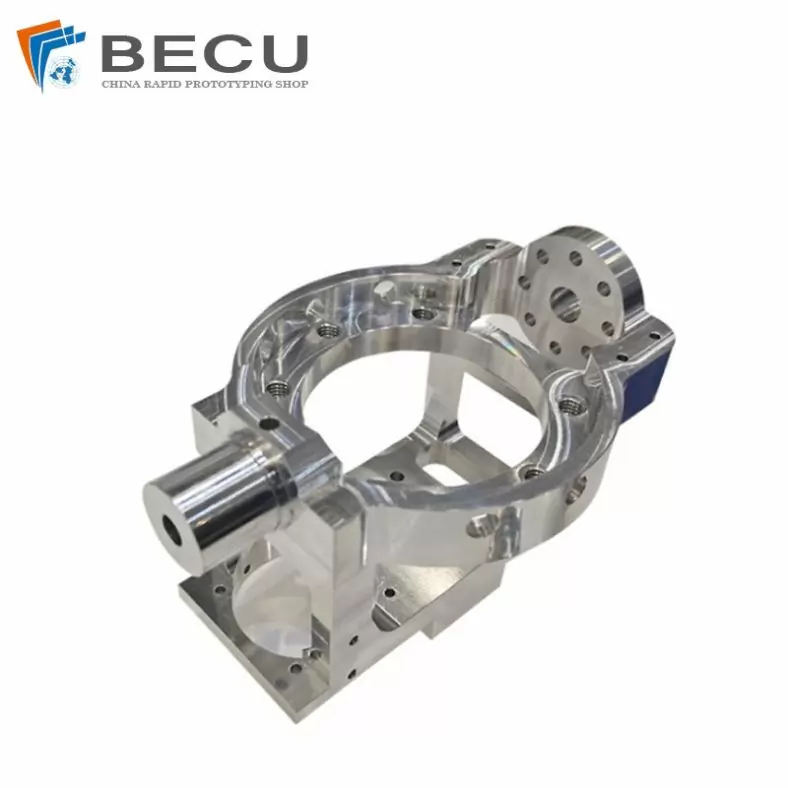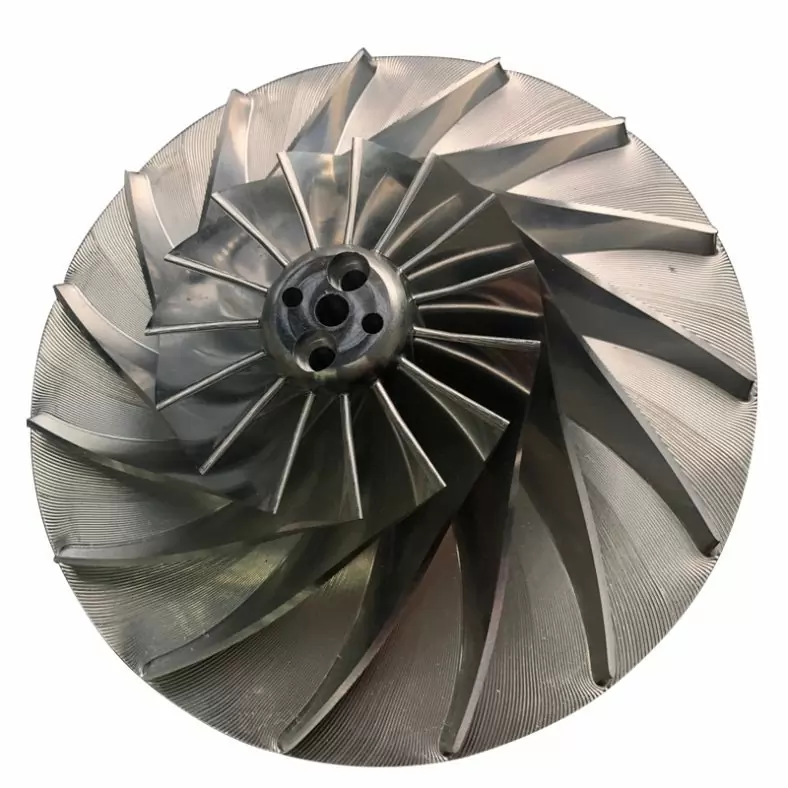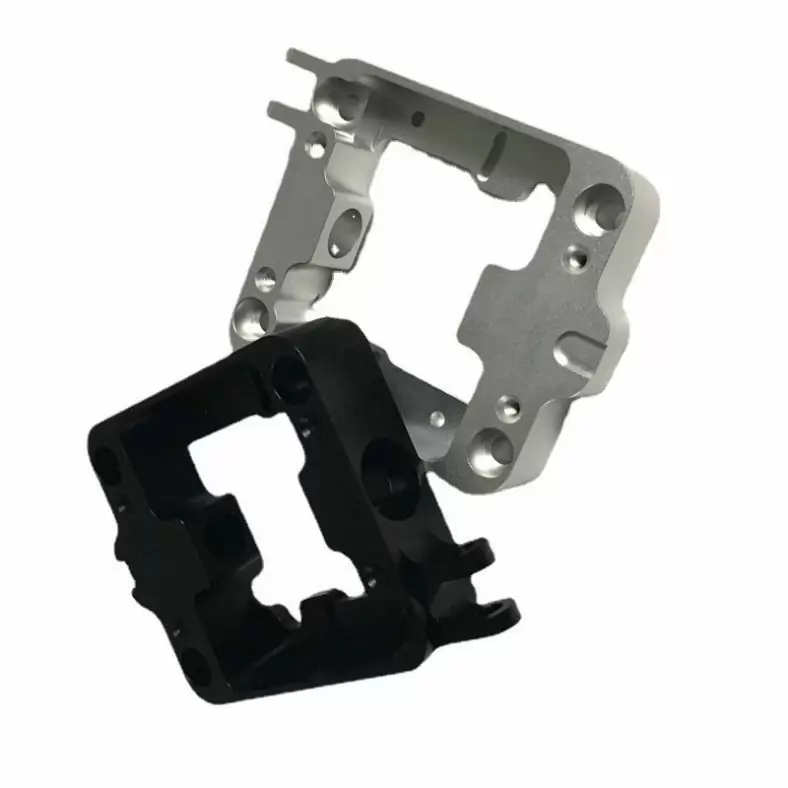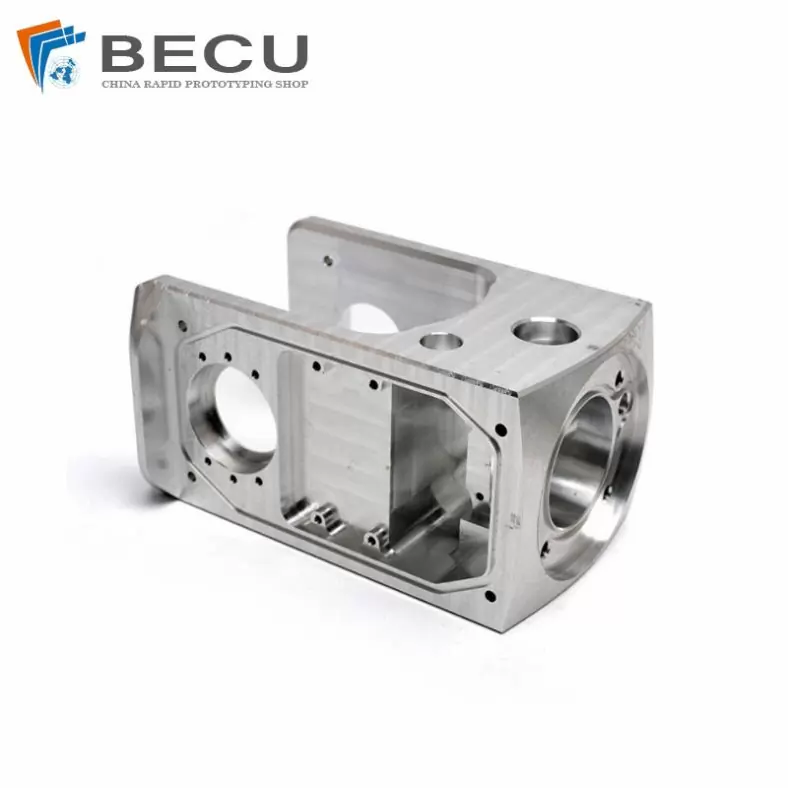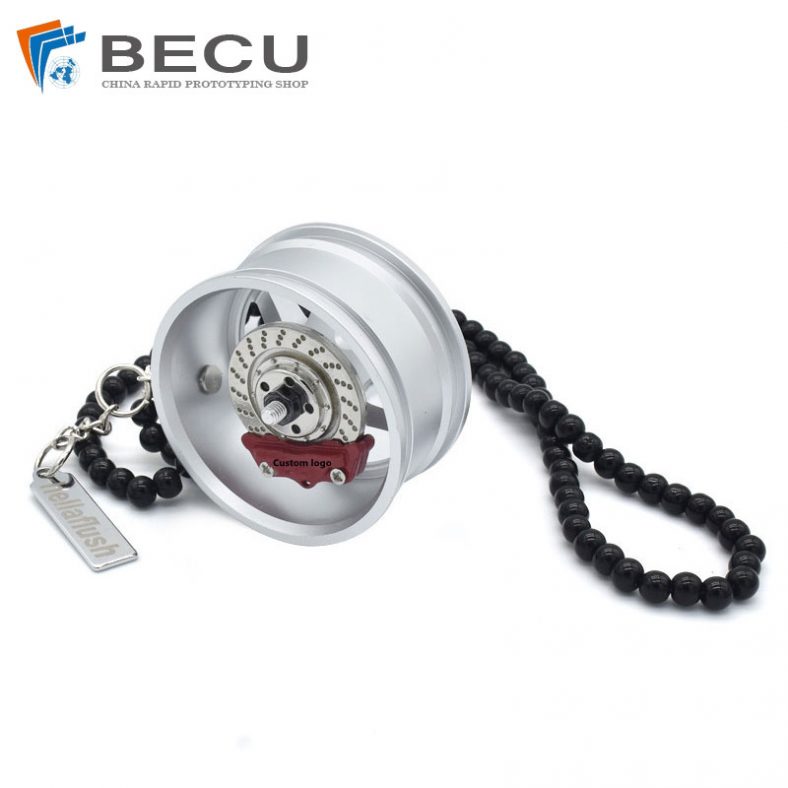CNC (Computer Numerical Control) machining has revolutionized the manufacturing industry by offering precision, efficiency, and consistency in producing intricate parts. One of the critical aspects of achieving optimal results in CNC machining is determining the feed route. A well-planned feed route not only ensures efficient material removal but also enhances tool life and reduces machining time. In this comprehensive guide, we will delve into the various factors that influence feed route selection, strategies for different machining operations, and best practices to master CNC machining feed routes.

CNC machining, short for Computer Numerical Control machining, is a manufacturing process that utilizes automated machine tools guided by computer programs to create precise and complex parts. This process replaces traditional manual machining methods, where operators controlled the machines through manual actions. CNC machining involves the use of various machining tools, such as mills, lathes, routers, and grinders, to shape and cut materials into specific shapes and dimensions.The core principle of CNC machining lies in its automation and precision. Computer programs, often created using Computer-Aided Design (CAD) and Computer-Aided Manufacturing (CAM) software, provide instructions to the CNC machine on how to move the cutting tool along precise paths to achieve the desired part geometry.
This automation results in consistent and accurate parts production, reducing human error and increasing efficiency.
Importance of Feed Routes
In the realm of CNC machining, the feed route, also referred to as the toolpath or cutting path, is the trajectory that the cutting tool follows while removing material from the workpiece. The selection of an appropriate feed route is critical because it impacts several aspects of the machining process, including the quality of the finished part, the efficiency of material removal, tool life, and machining time.
A well-optimized feed route ensures efficient chip evacuation, reduces the occurrence of tool wear, minimizes vibrations, and helps achieve the desired surface finish. Different feed routes are suitable for various machining operations and materials, and choosing the right one can make a significant difference in the overall machining process. Proper feed route planning can also lead to reduced tooling costs, shorter production cycles, and improved part quality.
Role of CNC Programming
CNC programming is the process of creating a set of instructions that guide the CNC machine’s movements and actions during the machining process. These instructions are typically generated using CAM software, which takes the CAD model of the part and translates it into toolpaths that the machine can follow. CNC programming involves specifying various parameters, including feed rates, cutting depths, tool changes, and spindle speeds.
The CNC program communicates with the machine’s controller, which interprets the instructions and coordinates the movements of the machine’s axes to execute the desired operations. The accuracy of the programmed instructions directly impacts the accuracy of the finished part. CNC programmers must have a deep understanding of machining processes, tooling, material properties, and feed routes to generate efficient and effective programs.
In essence, CNC programming is the bridge between the designer’s vision and the machinist’s execution. It transforms a digital design into tangible, precise components by orchestrating the machine’s movements and tool actions. The choice of feed route within the CNC program plays a pivotal role in achieving the desired outcomes while considering factors such as material characteristics, tool capabilities, and machining goals.
In the subsequent sections of this guide, we will explore the factors that influence feed route selection, delve into the different types of feed routes, discuss strategies for various machining operations, and provide insights into optimizing feed routes for enhanced efficiency and precision. Through a comprehensive understanding of these aspects, manufacturers can master the art of feed route determination, resulting in improved CNC machining processes and exceptional part production.
Factors Influencing Feed Route Selection
The selection of an appropriate feed route in CNC machining is a multidimensional decision that depends on various factors. Each factor contributes to the overall efficiency, accuracy, and quality of the machining process. Here, we will explore in depth the key factors that influence the choice of a feed route:
1. Workpiece Material
The properties of the workpiece material have a profound impact on feed route selection. Different materials exhibit varying degrees of hardness, brittleness, thermal conductivity, and chip formation characteristics. Softer materials like plastics may require smoother and more continuous feed routes to prevent excessive heat buildup, while harder materials like metals might benefit from intermittent cuts to prevent tool wear and chipping. The feed route should be chosen to optimize chip evacuation and minimize tool wear based on the workpiece material.
2. Tool Geometry and Material
The geometry and material of the cutting tool significantly influence the feed route. Tools with different geometries, such as end mills, drills, and inserts, have specific design features that cater to different types of feed routes. For instance, a tool with sharp edges and a pointed tip might be ideal for drilling operations, while a tool with a rounded edge might be better suited for contour following. The choice of tool material also affects its wear resistance and cutting capabilities, which in turn impact the optimal feed route.
3. Cutting Conditions
Cutting conditions encompass parameters such as cutting speed, feed rate, and depth of cut. Aggressive feed routes might be appropriate for roughing operations where material removal is the primary goal, whereas finishing passes demand smoother and more controlled feed routes to achieve fine surface finishes. Adjusting cutting conditions based on the feed route can help balance material removal rate, tool wear, and surface quality.
4. Toolpath Complexity
The complexity of the workpiece geometry and features plays a pivotal role in feed route selection. Complex geometries, intricate details, and varying depths require careful consideration to ensure uniform material removal and avoid collisions. For complex parts, adaptive toolpaths or multi-axis machining techniques might be necessary to achieve the desired results without compromising accuracy.
5. Machine Rigidity
The rigidity and stability of the CNC machine influence feed route selection, especially when dealing with high-speed or heavy cutting operations. Vibrations and chatter can lead to poor surface finish, inaccurate dimensions, and reduced tool life. Selecting a feed route that minimizes sudden changes in direction or load can help mitigate these issues and ensure smooth machining.
6. Surface Finish Requirements
The desired surface finish of the machined part is a crucial factor in feed route selection, especially during finishing operations. Smooth and high-quality surface finishes require precise and controlled tool movements. Feed routes that reduce tool engagement and minimize sudden changes in direction can help achieve the desired surface quality while preventing tool marks and imperfections.
Feed route selection is a meticulous process that involves considering a range of factors to achieve optimal machining outcomes. By carefully analyzing the workpiece material, tool characteristics, cutting conditions, complexity of the part, machine rigidity, and surface finish requirements, manufacturers can determine the most suitable feed route for a specific machining operation. In the subsequent sections, we will explore different types of feed routes, strategies for various machining operations, and techniques to optimize feed routes for improved efficiency and precision.
Types of Feed Routes
The choice of a feed route significantly impacts the efficiency, tool life, and surface finish of CNC machining operations. Different types of feed routes are suited to specific machining tasks and workpiece geometries. Here, we will delve into five common types of feed routes and their applications:
1. Zig-Zag or Back and Forth
The zig-zag or back and forth feed route involves the cutting tool moving in a linear path along parallel lines, reversing its direction at the end of each pass. This type of feed route is commonly used for roughing operations, where the primary goal is to remove material quickly and efficiently. Zig-zag feed routes ensure uniform material removal and are especially effective for parts with large flat areas. They help prevent uneven wear on the cutting tool and provide consistent chip evacuation.
Applications: Roughing out large areas, facing operations, material removal.
2. Contour Following
Contour following feed routes involve the tool following the outline of the part’s profile. This type of feed route is ideal for profiling and finishing operations, where precision and accuracy are paramount. Contour following ensures that the tool closely follows the shape of the part, achieving consistent feature dimensions and surface finish.
Applications: Profiling, finishing, engraving, creating intricate shapes and contours.
3. Circular
Circular feed routes involve machining in circular patterns around a fixed point or axis. This type of feed route is often used for creating holes, rounded features, and pockets. Circular routes minimize directional changes of the tool, which can be beneficial for achieving smooth cuts and reducing tool wear.
Applications: Drilling holes, creating rounded features, circular pockets.
4. Radial
Radial feed routes move the tool in an outward or inward spiral from a central point. This type of feed route is useful for creating pockets, holes, and curved surfaces. The gradual movement of the tool along the radial path helps distribute the cutting load evenly and prevents abrupt changes in direction that could lead to tool wear.
Applications: Pocketing, creating holes with a gradual entry, machining curved surfaces.
5. Helical
Helical feed routes combine axial (linear) and radial (circular) movements, resulting in a spiral toolpath. This type of feed route is versatile and can be used for plunging into materials, ramping into cuts, and creating smooth contours. Helical feed routes offer efficient chip evacuation and reduce the load on the tool, making them suitable for a variety of machining operations.
Applications: Plunging, ramping, contouring, creating threads, machining helical features.
Choosing the right type of feed route depends on factors such as the machining operation, workpiece geometry, material properties, and desired surface finish. Combining different feed routes within a single machining process can optimize material removal and overall machining efficiency. In the upcoming sections, we will explore feed route strategies tailored for specific machining operations, as well as techniques to optimize feed routes for maximum efficiency and precision.
Feed Route Strategies for Different Machining Operations
The selection of an appropriate feed route is highly dependent on the specific machining operation being performed. Different operations require distinct approaches to ensure optimal material removal, accuracy, and surface finish. Let’s explore the feed route strategies for various common machining operations:
1. Facing and Pocketing
- Facing: For facing operations, a linear or zig-zag feed route is often employed. The tool moves back and forth across the workpiece’s flat surface, ensuring even material removal and creating a smooth finish. This feed route helps achieve flatness and parallelism in large areas.
- Pocketing: Pocketing involves removing material within a defined area to create recesses or pockets. A combination of circular and contour following feed routes is commonly used. Circular routes are used for initial material removal, followed by contour following routes to achieve precise pocket dimensions and corner radii.
2. Drilling and Tapping
- Drilling: Drilling operations typically involve a helical feed route as the tool descends into the material to create holes. The helical path aids in efficient chip evacuation and reduces cutting forces. Peck drilling, where the tool retracts periodically during drilling, can further enhance chip evacuation in deep holes.
- Tapping: Tapping operations involve creating threads within a hole. The tool follows a combination of radial and circular feed routes to synchronize with the thread pitch. This approach ensures accurate thread profiles and minimizes the risk of thread damage.
3. Profiling and Contouring
- Profiling: Profiling operations require precise control over the tool’s path to achieve accurate part dimensions and contours. Contour following feed routes closely match the part’s outline, ensuring that the tool maintains a consistent distance from the profile. Adaptive toolpaths might be used to adapt to varying part geometries and features.
- Contouring: Similar to profiling, contouring operations involve machining along a predefined path. The feed route strategy aims to smoothly trace the part’s contours while maintaining the desired distance. Depending on the complexity of the contour, combinations of linear, circular, and radial routes might be used.
4. Engraving and 3D Machining
- Engraving: Engraving operations require intricate toolpaths to achieve precise depths and details. Zig-zag or back and forth feed routes are commonly used for shallow engraving, while more complex patterns might involve contour following routes to replicate intricate designs.
- 3D Machining: Machining complex 3D shapes involves a combination of feed routes to achieve the desired surface finish. Helical, contour following, and adaptive toolpaths may be employed to create intricate forms, smooth transitions, and precise details in the workpiece.
In each of these machining operations, the choice of feed route is driven by the desired outcome, workpiece geometry, tool capabilities, and material characteristics. Mastering the appropriate feed route strategy for each operation is essential for achieving accurate, efficient, and high-quality machining results. As we move forward, we will explore strategies to optimize feed routes for enhanced efficiency and precision, along with the software tools that facilitate feed route planning and execution.
Optimizing Feed Routes for Efficiency and Precision
Achieving the highest levels of efficiency and precision in CNC machining goes beyond selecting the right feed route type. Optimization strategies are essential to maximize tool life, minimize cycle times, and ensure superior part quality. Here are key techniques for optimizing feed routes:
1. Adaptive Feed Control
Adaptive feed control is a dynamic strategy that adjusts the feed rate in real-time based on the cutting conditions. Modern CNC systems equipped with sensors and advanced software can monitor factors such as tool wear, spindle load, and cutting forces. This information is used to adjust the feed rate as the tool engages different areas of the workpiece. Adaptive feed control optimizes material removal rates, extends tool life, and reduces the risk of tool breakage or workpiece damage.
2. Trochoidal Milling
Trochoidal milling is a high-efficiency technique that involves using curved toolpaths instead of straight lines. The tool follows circular or arc-like paths, reducing the amount of time the cutting edges are engaged with the material. This technique minimizes radial engagement and tool deflection, leading to faster material removal rates and reduced tool wear. Trochoidal milling is particularly effective for slotting, pocketing, and roughing operations.
3. High-Speed Machining
High-speed machining (HSM) involves using significantly elevated cutting speeds while maintaining accurate feed rates. HSM takes advantage of the improved material removal rates at higher speeds, resulting in shorter cycle times. To implement HSM effectively, a rigid machine, precise toolholders, and advanced tool coatings are necessary. The choice of feed route is crucial in HSM to minimize sudden changes in direction and optimize chip evacuation.
4. Chip Load Optimization
Chip load optimization involves adjusting the feed rate and cutting speed to maintain a consistent chip thickness during machining. This technique ensures that the tool engages the material optimally, preventing excessive tool wear or deflection. Dynamic chip thinning is an example of chip load optimization that considers the engagement angle and adjusts the feed rate accordingly. Maintaining a consistent chip load enhances tool life and surface finish.
By incorporating these optimization techniques into the feed route planning process, manufacturers can achieve significant improvements in machining efficiency, tool life, and part quality. The combination of advanced CNC capabilities and strategic feed route selection empowers manufacturers to push the boundaries of CNC machining performance while meeting the demands of modern manufacturing.
In the next section, we will explore the software tools that facilitate feed route planning and execution, allowing manufacturers to visualize, simulate, and fine-tune their machining processes for optimal outcomes.
Software Tools for Feed Route Planning
In the realm of CNC machining, software tools play a pivotal role in transforming design concepts into tangible parts. These tools enable manufacturers to plan, simulate, and optimize feed routes, ensuring precise and efficient machining operations. Let’s delve into the software tools that facilitate feed route planning and execution:
1. CAM (Computer-Aided Manufacturing) Software
CAM software is a cornerstone of modern CNC machining. It takes the digital CAD model of the part and generates toolpaths that guide the CNC machine’s movements. CAM software allows users to define cutting parameters, tool selection, feed rates, and cutting strategies. Different CAM software suites offer a range of functionalities, from basic toolpath generation to advanced optimization and simulation features.
Key features of CAM software include:
- Toolpath generation: CAM software provides various algorithms for creating feed routes tailored to specific machining operations.
- Customization: Users can adjust cutting parameters and feed routes to optimize tool life, surface finish, and machining efficiency.
- Simulation: CAM software often includes simulation capabilities to visualize tool movements, detect collisions, and ensure the accuracy of the programmed feed routes.
2. Simulation and Verification Tools
Simulation and verification tools provide a virtual representation of the machining process before any physical cutting occurs. These tools offer a crucial safety net by allowing users to identify potential collisions, errors, or inaccuracies in the feed routes. Simulation software displays the toolpath in a visual format, providing insights into how the tool interacts with the workpiece.
Benefits of simulation and verification tools:
- Collision detection: Detects potential collisions between the tool, toolholder, and workpiece, preventing costly machine damage.
- Material removal visualization: Simulations show how the material is removed during machining, aiding in process validation.
- Real-time feedback: Users can assess the feed route’s accuracy and make adjustments before starting the actual machining process.
3. Importance of Customization
Customization is a crucial aspect of feed route planning and execution. While CAM software provides default toolpath strategies, customizing feed routes to match specific machining requirements can lead to superior results. Manufacturers must consider factors such as material properties, tool capabilities, workpiece geometry, and desired surface finish when tailoring feed routes.
Customization benefits:
- Optimization: Customized feed routes can optimize tool life, cycle times, and surface finish based on unique machining conditions.
- Complex geometries: Customization allows the adaptation of feed routes to intricate part geometries and features.
- Process control: Fine-tuning feed routes ensures consistent and repeatable results for high-quality parts.
Software tools empower manufacturers to plan, optimize, and execute feed routes with precision and efficiency. CAM software generates tailored toolpaths, simulation tools provide insights into the machining process, and customization allows manufacturers to adapt feed routes to specific needs. The integration of these tools ensures successful CNC machining operations, producing parts that meet exacting standards and contribute to overall manufacturing excellence.
Best Practices for Mastering Feed Routes
Mastering feed routes in CNC machining requires a combination of careful planning, strategic execution, and continuous improvement. By following best practices, manufacturers can achieve optimal results in terms of efficiency, precision, and part quality. Here are essential best practices to consider:
1. Pre-Machining Analysis
Before generating a feed route, conduct a comprehensive pre-machining analysis. This involves examining the workpiece’s geometry, material properties, and design requirements. Identify critical features, areas that need special attention, and potential challenges. Understanding the workpiece thoroughly guides feed route decisions, ensuring appropriate toolpaths are selected for each machining operation.
Key considerations:
- Workpiece material: Understand material characteristics such as hardness, brittleness, and chip formation behavior.
- Geometry complexity: Analyze intricate features that might require adaptive toolpaths or specialized feed route strategies.
- Surface finish requirements: Determine the desired surface finish to guide the choice of appropriate feed routes.
- Cutting conditions: Consider factors like cutting speed, feed rate, and depth of cut based on the material and tool capabilities.
2. Toolpath Visualization
Visualizing the toolpath before actual machining is essential for detecting potential errors and ensuring the accuracy of the feed route. CAM software and simulation tools allow you to visualize the tool’s movements and interactions with the workpiece in a virtual environment.
Benefits of toolpath visualization:
- Collision detection: Identify collisions between the tool, toolholder, and workpiece, preventing damage during actual machining.
- Accuracy assessment: Verify that the toolpath accurately represents the desired machining operations.
- Process optimization: Analyze how the tool engages the material to fine-tune feed routes for efficiency and precision.
3. Test Cuts and Iterative Refinement
Performing test cuts is a prudent approach to validate feed routes and make necessary adjustments before machining the final part. Use a workpiece material of similar properties to the actual part and execute the feed route on a smaller scale. This iterative process allows you to assess the tool’s behavior, chip formation, and surface finish.
Steps for iterative refinement:
- Execute a test cut using the chosen feed route.
- Evaluate the results, including tool wear, chip evacuation, and surface quality.
- Modify the feed route parameters as needed based on the test cut outcomes.
- Repeat the test-cutting process until the desired results are achieved.
4. Post-Machining Evaluation
After completing the machining process, conduct a post-machining evaluation to assess the accuracy and quality of the finished part. Use precision measurement tools to verify dimensional accuracy and inspect the surface finish. Compare the actual results to the expected outcomes to identify any deviations.
Post-machining evaluation steps:
- Measure critical dimensions to ensure they meet design specifications.
- Inspect surface finish using appropriate measurement instruments.
- Compare actual results with the pre-machining analysis and expectations.
- Document findings for future reference and process improvement.
By incorporating these best practices into your CNC machining workflow, you can effectively master feed routes and enhance your ability to produce parts that meet or exceed quality standards. Continuously refining your feed route planning and execution processes contributes to overall manufacturing efficiency and competitiveness.
Case Studies: Real-World Applications
Exploring real-world case studies provides valuable insights into how feed route planning and execution impact various industries. Let’s delve into four different applications to understand how feed routes are tailored to specific needs:
1. Aerospace Component Manufacturing
Challenge: Aerospace components demand high precision and structural integrity. Machining operations must achieve tight tolerances and impeccable surface finishes.
Solution: Aerospace machining manufacturers often use a combination of contour following and adaptive feed control strategies. The contour following routes ensure precise part dimensions, while adaptive feed control optimizes tool engagement based on changing cutting conditions. High-speed machining is also employed to expedite material removal while maintaining accuracy.
2. Automotive Part Production
-

Large CNC Turning Inconel 625 Automobile Engine Camshafts
-
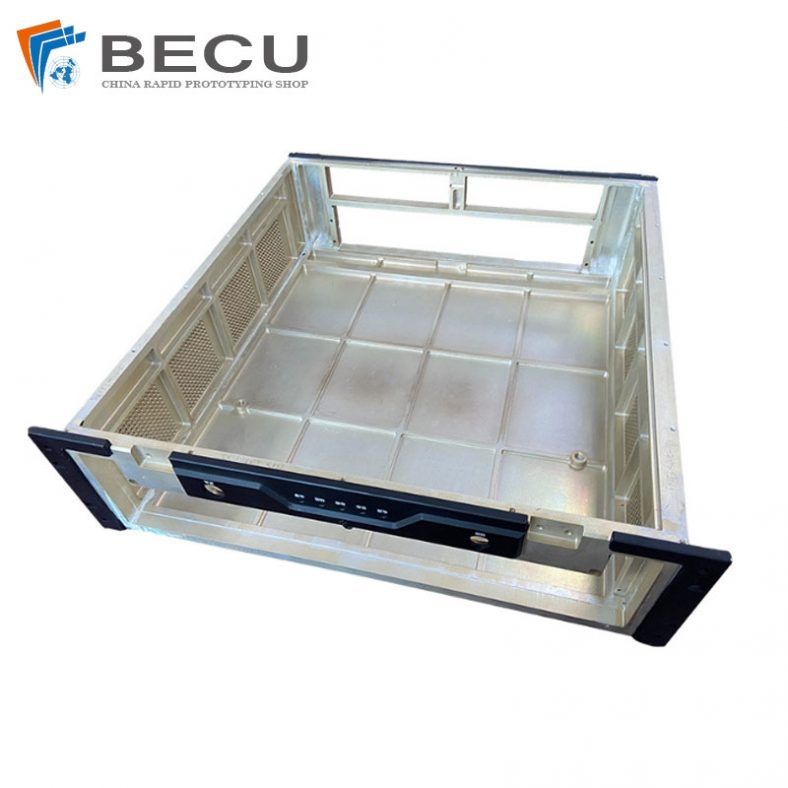
Precision Machining 6063 Aluminum Military Computer Server Chassis
-
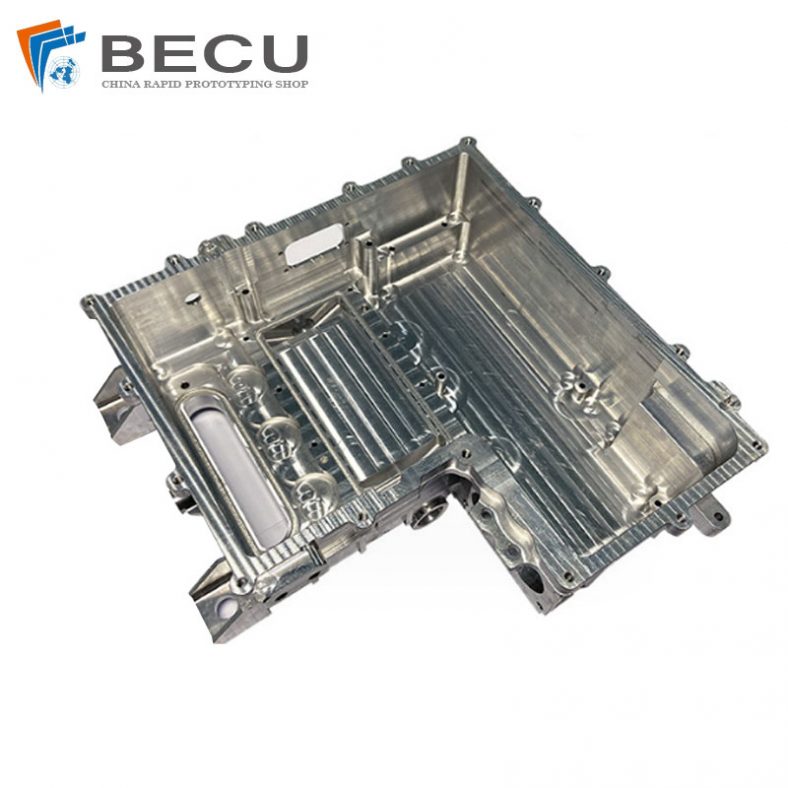
CNC 6063 Aluminum Automotive Motor End Cover
-

Sintering YG6 Tungsten Alloy Non-Slip Thread Screw
-
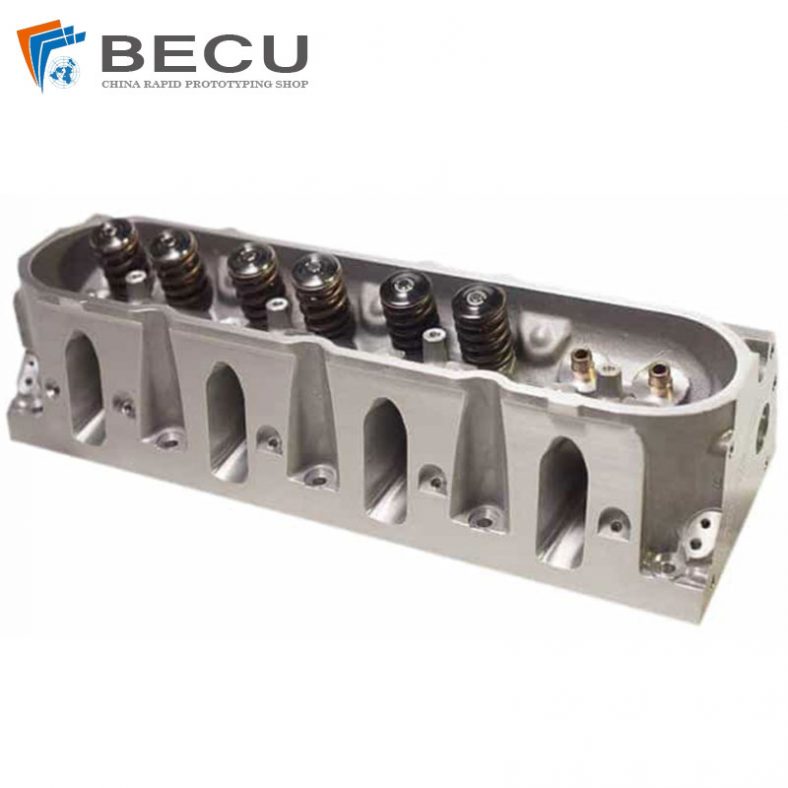
Precision Machining 6061-T1 Automobile Motor Prototype
-

New Energy Vehicle Air Conditioning Dynamic And Static Disk Components
-

3/4/5 Axis Precision Milling Custom Vehicle Parts
-
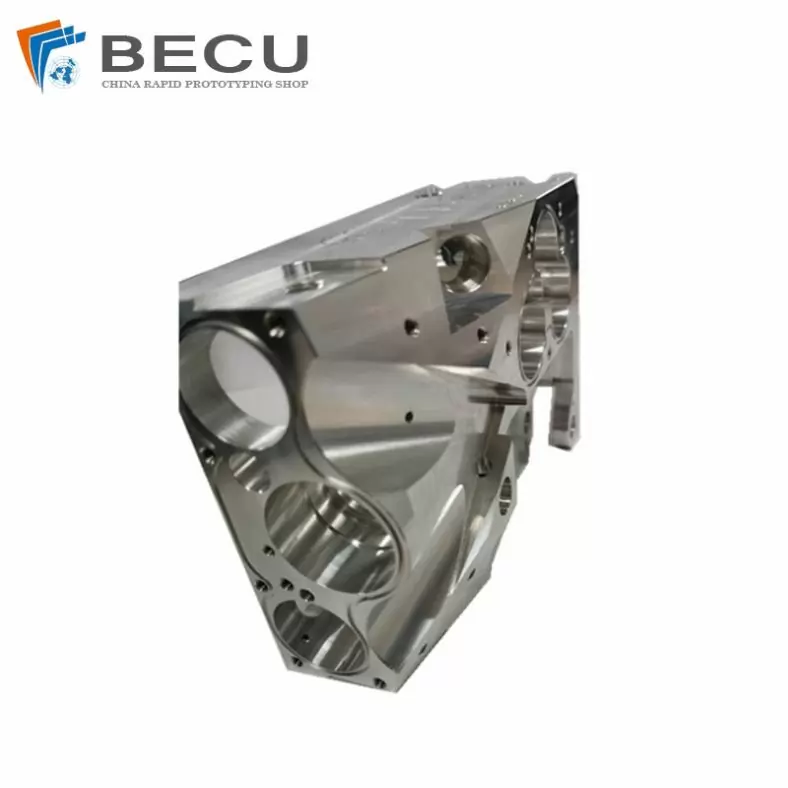
DMU Five-Axis Cnc Machining Aluminum Alloy Complex Structures Parts
Challenge: Automotive parts range from intricate engine components to larger structural elements. Feed routes must balance efficiency, surface finish, and dimensional accuracy.
Solution: For engine components, trochoidal milling is effective due to its high material removal rates and reduced tool deflection. Circular and radial feed routes are used for parts with holes and curves. Post-machining evaluation is crucial to ensure parts meet stringent quality standards.
3. Medical Device Fabrication
Challenge: Medical devices require exceptional precision, cleanliness, and biocompatibility. Feed routes must create intricate shapes without compromising material integrity.
Solution: Engraving and 3D machining strategies are employed to achieve precise details in medical device components. Toolpath visualization ensures that feed routes match intricate designs, while adaptive feed control prevents tool wear and maintains accuracy.
4. Jewelry Making
Challenge: Jewelry machining involves working with delicate and intricate materials. Feed routes must create precise shapes and fine details while preserving material aesthetics.
Solution: Engraving and contour following feed routes are commonly used in jewelry making. Toolpath customization is crucial to align with intricate designs. Post-machining evaluation ensures that the feed route accurately captures the desired design while maintaining the integrity of precious materials.
Each of these case studies demonstrates how feed route selection and optimization are tailored to the specific requirements of different industries. By aligning feed routes with industry demands, manufacturers can achieve remarkable results in terms of part quality, efficiency, and overall customer satisfaction.
Challenges and Solutions in Feed Route Determination
Feed route determination in CNC machining involves navigating through various challenges posed by different workpiece geometries, materials, and machining conditions. Here, we’ll delve into key challenges and their corresponding solutions:
1. Complex Geometries
Challenge: Parts with intricate and complex geometries require careful consideration to ensure optimal material removal and accuracy.
Solution: Utilize adaptive toolpaths and multi-axis machining strategies. CAM software with collision detection capabilities helps avoid tool collisions with the workpiece. Divide complex parts into smaller sections for easier feed route planning.
2. Thin-Walled Workpieces
Challenge: Thin-walled components are susceptible to distortion and deflection under cutting forces, leading to inaccurate machining.
Solution: Apply trochoidal milling to minimize radial engagement and reduce the forces acting on the thin walls. Employ minimal engagement strategies to prevent workpiece deformation. Ensure proper workholding to maintain stability.
3. Hard-to-Machine Materials
Challenge: Machining materials like hardened steels, exotic alloys, and composites presents challenges due to their high hardness and toughness.
Solution: Opt for appropriate cutting tools and coatings designed for hard materials. Use high-speed machining techniques to reduce cutting forces and heat generation. Employ feed route strategies that involve intermittent cuts to manage tool wear.
4. Minimizing Vibrations and Chatter
Challenge: Vibrations and chatter during machining can lead to poor surface finish, tool wear, and even damage to the workpiece or machine.
Solution: Optimize feed routes to reduce sudden changes in direction and minimize tool engagement. Employ radial or helical feed routes that reduce vibration-inducing forces. Utilize advanced CNC systems with vibration monitoring and suppression capabilities.
Mastering feed route determination involves understanding the unique challenges posed by different materials, geometries, and machining conditions. By employing the right strategies and techniques, manufacturers can overcome these challenges to achieve efficient, precise, and high-quality machining outcomes. As CNC machining continues to evolve, the art of feed route planning remains a cornerstone of modern manufacturing excellence.
Future Trends in CNC Machining Feed Routes
As technology continues to advance, the field of CNC machining is evolving to meet new challenges and leverage innovative solutions. Feed route determination, a fundamental aspect of CNC machining, is also undergoing significant transformations. Here are some future trends that are shaping the landscape of feed route planning:
1. AI and Machine Learning Integration
Trend: Artificial Intelligence (AI) and machine learning are being integrated into CNC machining processes to optimize feed route planning and execution.
Impact: AI-driven algorithms can analyze vast amounts of data, including tool performance, workpiece properties, and historical machining data. This analysis enables AI to suggest feed route strategies that optimize for tool life, part quality, and production efficiency. Machine learning models can continuously refine these strategies based on real-world results, leading to adaptive and highly efficient machining processes.
2. Real-Time Feed Rate Adjustment
Trend: Real-time monitoring and adjustment of feed rates during machining operations are becoming more prevalent.
Impact: Advanced sensors and CNC systems can gather data on cutting forces, tool wear, and other parameters. This real-time data is used to dynamically adjust feed rates during machining, ensuring optimal conditions throughout the process. This approach minimizes the risk of tool breakage, reduces machining time, and improves overall machining accuracy.
3. Multi-Axis Machining Advancements
Trend: Multi-axis machining capabilities are advancing, enabling more complex and precise feed route planning.
Impact: With increased availability of multi-axis CNC machines, manufacturers can implement intricate feed route strategies that were once challenging to execute. Multi-axis machines can move the cutting tool in multiple directions simultaneously, allowing for smoother contour following, better surface finish, and reduced machining time.
4. Virtual Reality (VR) and Augmented Reality (AR) Integration
Trend: VR and AR technologies are being integrated into CNC machining workflows for immersive visualization and interactive planning of feed routes.
Impact: Engineers and operators can visualize toolpaths in a virtual environment, identifying potential collisions and refining feed routes before executing them on the actual machine. This technology enhances collaboration and training, while also allowing for intuitive adjustment of feed routes in real time.
5. Digital Twin Integration
Trend: Digital twin technology, which creates a digital replica of a physical asset, is finding its way into CNC machining processes.
Impact: By creating a digital twin of the CNC machine and workpiece, manufacturers can simulate machining operations before physical execution. This includes simulating feed routes to identify potential issues and optimize strategies. Digital twins enable testing and validation without material waste, reducing production costs and risks.
In conclusion, the future of feed route determination in CNC machining is marked by the integration of advanced technologies such as AI, real-time monitoring, multi-axis capabilities, VR/AR, and digital twins. These trends are set to revolutionize the way manufacturers plan, optimize, and execute feed routes, driving greater efficiency, precision, and innovation in the world of CNC machining.
Conclusion
Feed route determination stands as a critical pillar in the world of CNC machining, where precision, efficiency, and quality converge. As this comprehensive guide has illuminated, the process of selecting, planning, and executing feed routes is far from arbitrary; it is a strategic art that requires a deep understanding of materials, tools, machine capabilities, and industry demands.
From the foundational understanding of CNC machining and the importance of feed routes to the exploration of various factors influencing feed route selection, this guide has covered a vast array of essential concepts. The roles of CNC programming and software tools, such as CAM software and simulation tools, have been highlighted as crucial in turning design intentions into tangible and accurate machined parts.
As machining operations diversify across industries, the guide delved into specific feed route strategies for different tasks like facing, drilling, profiling, and engraving. Case studies underscored the real-world application of these strategies in industries ranging from aerospace and automotive to medical device fabrication and jewelry making.
Understanding challenges and solutions provided valuable insights into addressing complexities associated with thin-walled workpieces, complex geometries, hard-to-machine materials, and vibrations. Furthermore, the guide offered a glimpse into the future of feed route determination, where AI, real-time adjustments, multi-axis advancements, and digital twin technology are poised to reshape the landscape of CNC machining.
In the dynamic and ever-evolving field of CNC machining, mastery over feed route determination is a defining skill that sets the stage for excellence in manufacturing. The efficient and precise removal of material, combined with the art of optimizing toolpaths, not only influences product quality but also shapes the future of industries worldwide. As technological advancements continue to unfold, embracing the best practices and future trends highlighted in this guide will undoubtedly propel CNC machining toward even greater realms of innovation, precision, and efficiency.


